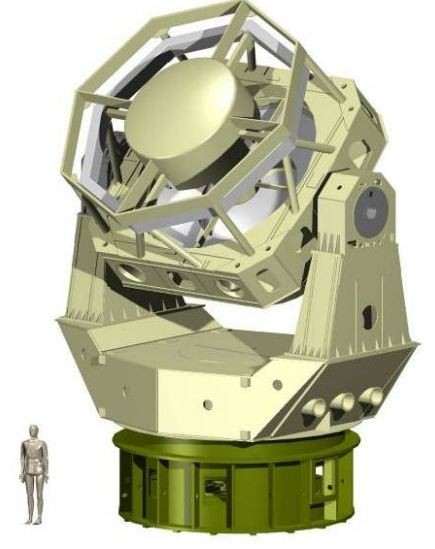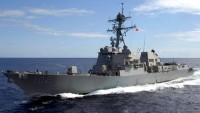US Air Force Takes Control of Powerful DARPA Space Telescope for Tracking Spy Satellites
| Arthur Dominic Villasanta | | Oct 21, 2016 09:45 AM EDT |
(Photo : DARPA) Space Surveillance Telescope
A powerful space telescope designed to quickly spot fast moving spy satellites; small space debris (and even alien spacecraft?) has been turned over to the U.S. Air Force by the U.S. Defense Advanced Research Projects Agency (DARPA).
With the handover, the Space Surveillance Telescope or SST officially becomes a sensor in the Space Surveillance Network of the Air Force Space Command (AFSC). Operational use of the SST, however, won't begin until 2020 after the system is moved to Australia.
Like Us on Facebook
AFSC, a major command of the United States Air Force, supports U.S. military operations worldwide through the use of many different types of satellite, launch and cyber operations.
SST will be operated by AFSC in cooperation with the Royal Australian Air Force to officially track debris floating around space about 36,000 kilometers from Earth, which is a location called geostationary orbit (GEO).
SST has a 3.5 meter aperture mirror and came online in 2011. It's a ground based, advanced optical system for the detection and tracking of faint objects in space such as asteroids. It also conducts space defense missions that protect the United States.
SST is designed to expand space situational awareness, and to quickly provide wide area search capability.
"SST has about an order of magnitude better performance than the existing space surveillance network," which is the Ground-based Electro-Optical Deep Space Surveillance (GEODSS), said Lindsay Millard, DARPA's program manager.
Three technologies help contribute to that performance. The telescope incorporates the steepest curved primary telescope mirror ever made, which can collect light across a wider field of view.
The first-ever "curved charge coupled device" for the camera provides clear imagery, and its fast shutter speed allows it to take a greater number of photos.
Previous space telescopes could only see a couple large objects from a very narrow field of view, the equivalent of looking through a drinking straw. SST broadens that to a "windshield" view that can see 10,000 objects as small as a softball at the same time.
It also can conduct surveillance quickly, with a scan of an area the size of the continental United States taking only seconds. It can survey its entire field of view, which amounts to about one quarter of the sky, several times per night.
TagsSpace Surveillance Telescope, SST, U.S. Air Force, Defense Advanced Research Projects Agency, DARPA, Air Force Space Command
©2015 Chinatopix All rights reserved. Do not reproduce without permission
EDITOR'S PICKS
-

Did the Trump administration just announce plans for a trade war with ‘hostile’ China and Russia?
-

US Senate passes Taiwan travel bill slammed by China
-

As Yan Sihong’s family grieves, here are other Chinese students who went missing abroad. Some have never been found
-

Beijing blasts Western critics who ‘smear China’ with the term sharp power
-

China Envoy Seeks to Defuse Tensions With U.S. as a Trade War Brews
-

Singapore's Deputy PM Provides Bitcoin Vote of Confidence Amid China's Blanket Bans
-

China warns investors over risks in overseas virtual currency trading
-

Chinese government most trustworthy: survey
-

Kashima Antlers On Course For Back-To-Back Titles
MOST POPULAR
LATEST NEWS
Zhou Yongkang: China's Former Security Chief Sentenced to Life in Prison

China's former Chief of the Ministry of Public Security, Zhou Yongkang, has been given a life sentence after he was found guilty of abusing his office, bribery and deliberately ... Full Article
TRENDING STORY

China Pork Prices Expected to Stabilize As The Supplies Recover

Elephone P9000 Smartphone is now on Sale on Amazon India

There's a Big Chance Cliffhangers Won't Still Be Resolved When Grey's Anatomy Season 13 Returns

Supreme Court Ruled on Samsung vs Apple Dispute for Patent Infringement

Microsoft Surface Pro 5 Rumors and Release Date: What is the Latest?














